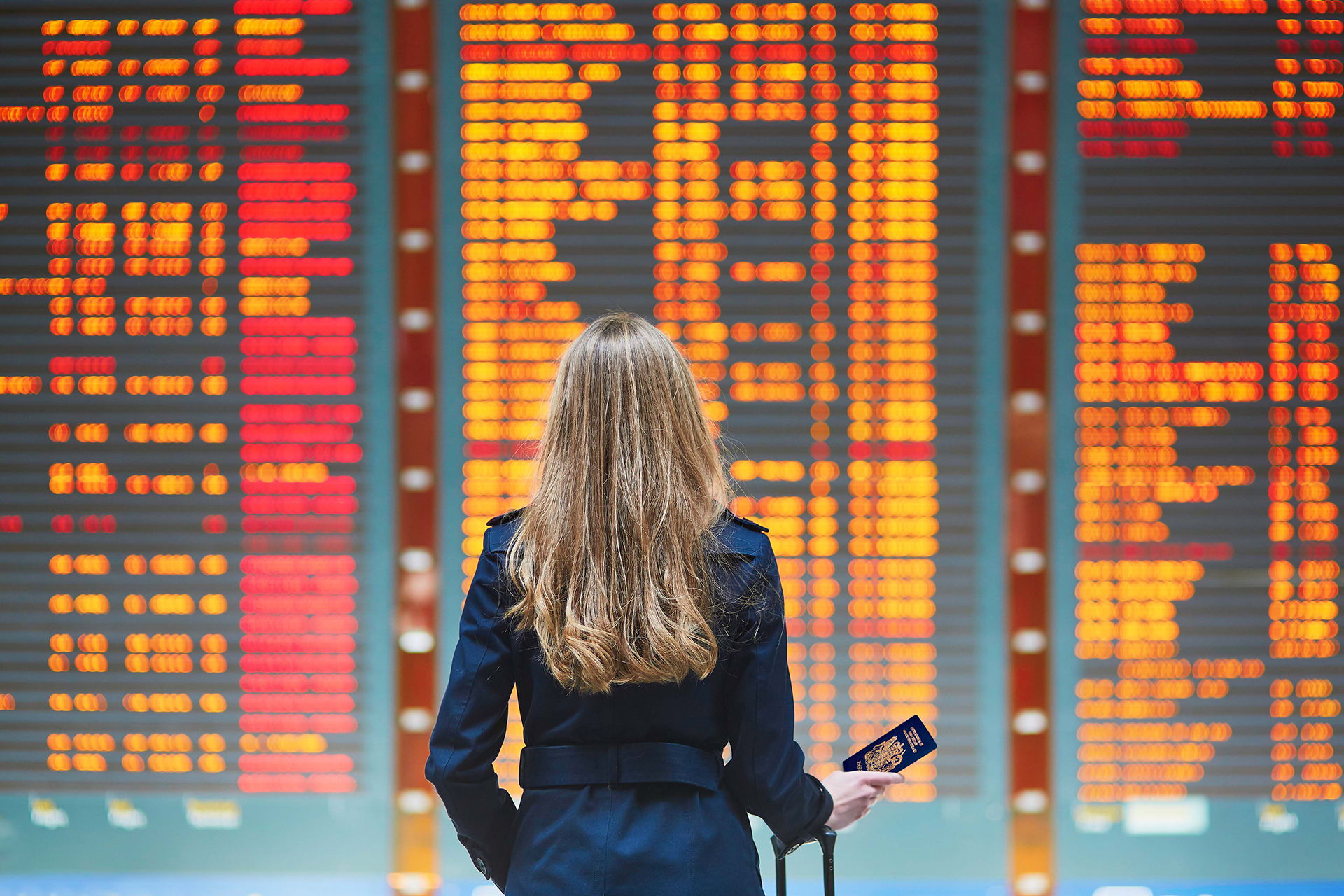Safety briefings
Although emergencies are rare, knowing what to do is essential for you and your family, as well as for other passengers.
The safety briefing and the safety information card provided near your seat give vital information on the location of exits and emergency equipment. As this can vary from one aircraft type to another, it is important to pay attention to the safety briefing and read the safety card each time you fly. You should check the location of your nearest emergency exit which may be behind you. Safety equipment will typically include life jackets; oxygen masks, seat belts/harnesses and floor lighting which helps you find your way to the exits.
Seat belts
You are recommended to keep your belt fastened throughout the flight, and must do so whenever the "seat belt" sign is on (during taxi, take-off, landing and during turbulence). You should adjust your belt so that it is tight but comfortable with the buckle the right way round so that it can be released easily. If you have a blanket over your lap and are likely to fall asleep, it is recommended that you fasten the seat belt over the blanket so cabin crew can see you have the belt fastened. After landing, you must wait until the "seat belt" sign goes off before undoing your belt at the end of the flight.
Emergency evacuations
In an emergency situation, where the crew tell passengers to evacuate the aircraft, it is vital that everyone follows the crew’s instructions and leaves the aircraft as quickly as possible. That means leaving all cabin baggage and belongings behind. An emergency evacuation will only take place if there is a significant safety risk. So, even if the cause of the emergency isn’t obvious within the aircraft, it is imperative that everyone gets off as quickly as possible and that passengers don’t block the escape of themselves and others by trying to take baggage and belongings with them.
Portable electronic devices
Some UK airlines allow passengers to use electronic devices such as smart phones, tablets and e-readers, for the duration of a flight. These airlines have conducted safety tests to ensure electronic devices do not adversely affect their aircraft. Currently, all electronic devices must remain in Flight Mode when switched on unless passengers are advised otherwise by cabin crew.
A number of international airlines have equipped some of their aircraft to allow mobile phone voice calls and texts in-flight. Other aircraft also have Wi-Fi installed, allowing passengers to browse the web. However, the situation will vary from one airline to another. Passengers will always be instructed by cabin crew as to exactly what electronic devices can be used, and in what mode, at the beginning of a flight. If in any doubt, always check with a member of cabin crew, before using a device.
Most airlines also publish details about travelling with portable electronic devices on their websites, as well as in their in-flight magazines.
Smoking
UK airlines do not permit smoking on board therefore the ‘no smoking’ signs will remain on throughout the flight.
Passengers are not permitted to smoke in toilets and these are fitted with smoke detectors. Tampering with an aircraft smoke detector is a serious offence and may lead to prosecution.
Health advice
Being seated for a long time, such as on flights longer than about four hours, may increase the risk of developing blood clots in the veins in your legs (also known as deep vein thrombosis or DVT). Some airlines provide information in their in-flight magazine or entertainment system on exercises you can do in your seat to try and reduce the risk. You should try to walk up and down the aisles from time to time, when the seat belt signs are off and it is safe to do so as well as doing these exercises. Some people are at increased risk of DVT and may need to speak to their doctor before travel about additional precautions, such as compression stockings (‘flight socks’) or medication.
On most aircraft, some of the cabin air is re-circulated. The re-circulated air is filtered before re-entering the cabin and does not carry bacteria or viruses. Like any public place where people are in close contact with one another, germs can easily be spread on aircraft.
Further guidance on fitness to fly
Accessing help while you are away
The Foreign Commonwealth and Development Office (FCDO) provides guidance for British nationals on who to contact If something goes wrong while you are abroad.
This includes advice about:
- Injuries and sickness
- Coping with a death abroad
- Arrest or detention
- Being a victim of crime while you are away
The European emergency number
If you need emergency services and you are in Europe, the phone number you should use is 112 which is the number for the emergency services across Europe. No country, city or district code is needed prior to 112.
In the UK 999 and 112 work in parallel.
Call 112 only in case of sudden real threat to life, health, safety, environment or property and when emergency services rapid assistance is needed.


Provide page feedback
Please enter your comments below, or use our usual service contacts if a specific matter requires an answer.
Fields marked with an asterisk (*) are required.